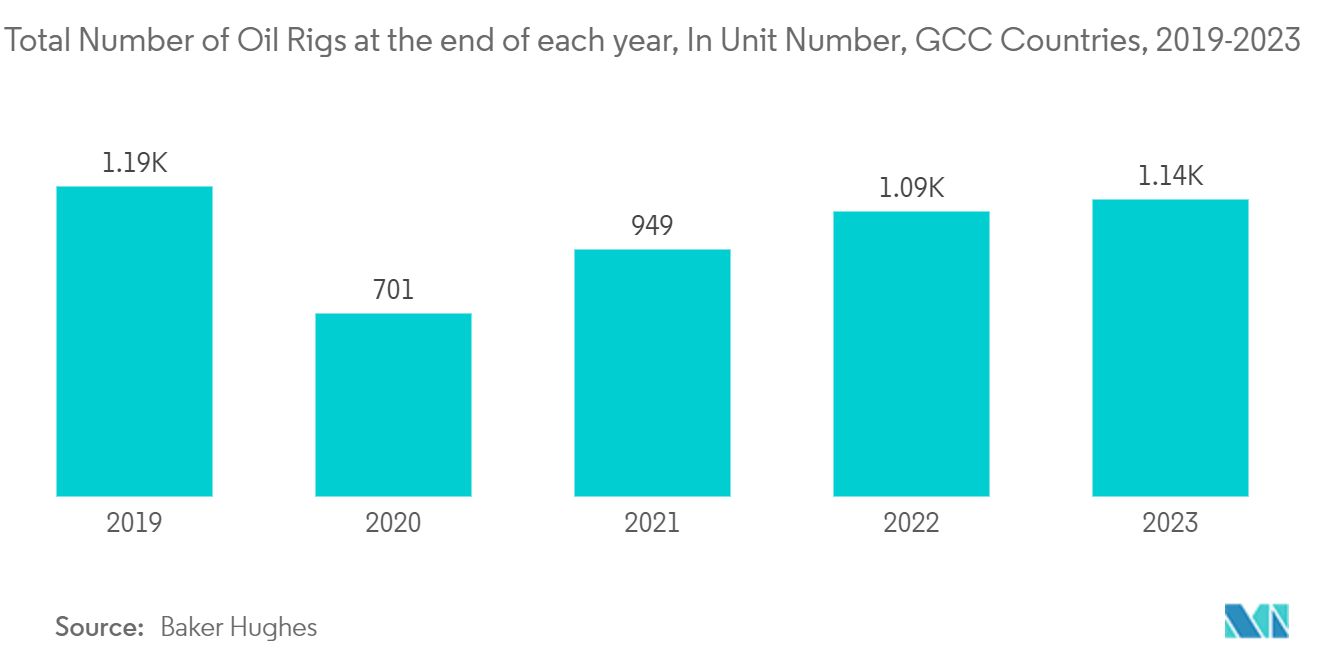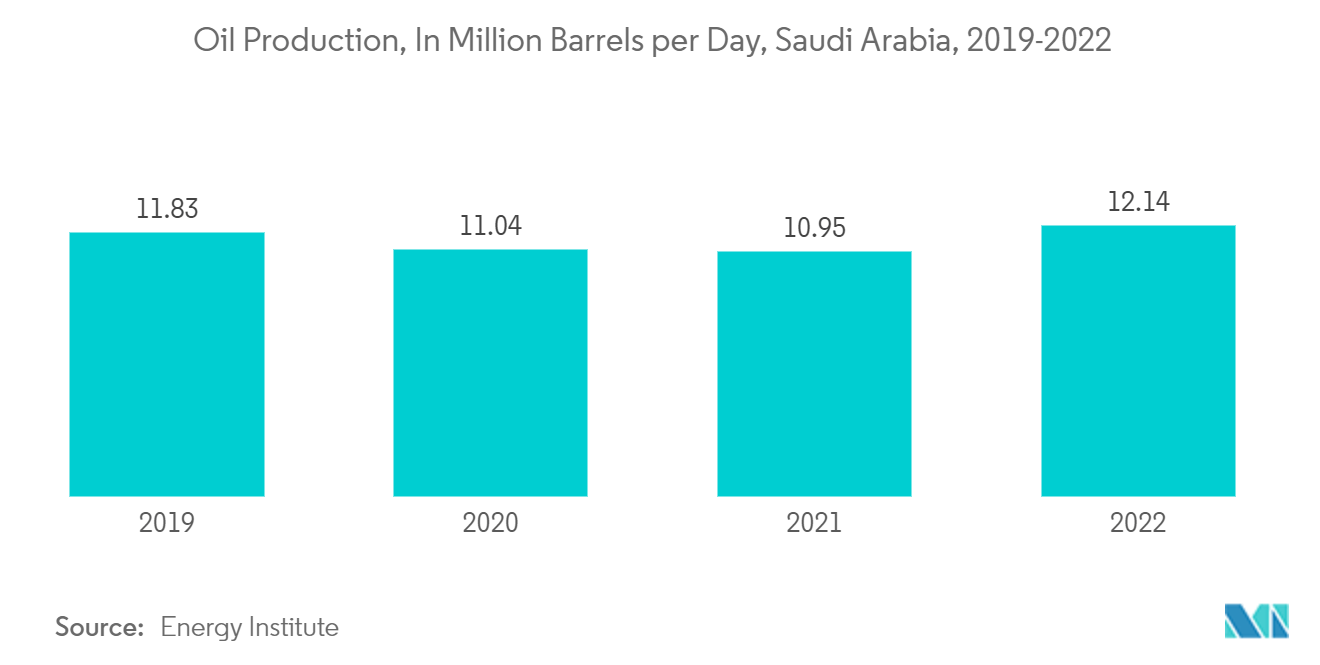Market Trends of GCC Firefighting Foam Industry
The Oil and Gas Industry to Dominate the Market
- Companies, especially upstream and downstream oil and gas production companies, regularly face high hazard and fire safety issues in the oil and gas sector. The onshore and offshore companies use firefighting foam to fight burning tanks, floating or fixed-roof, or pipeline fires.
- Firefighting foams are used in refineries, tank terminals, bulk fuel storage tanks, tank farms, LNG facilities, offshore platforms, and floating production storage and offloading (FPSO), where the main fire risks are hydrocarbon fires (Class B fire). Additionally, hydrocarbon fires comprise crude oil, fuel, gas, and shale oil.
- The oil and gas industry has one of the most significant amounts of firefighting foam. This foam is commonly used for Class B fires and is considered the best fire protection solution for fires caused by flammable liquids. The risk of oil-based fires is high due to the massive number of oil and gas production sites and refineries in the region. Hence, the demand for firefighting foam in the GCC region is expected to increase.
- Offshore oil and gas production has some of the most demanding conditions. Firefighting foams are also used extensively offshore and in onshore oil and gas installations. Therefore, the foam used in it is to be equipped likewise. With crude oil recovery prices becoming visible in the oil and gas industry, exploration and production have increased across the GCC countries.
- According to Baker Hughes, the number of active oil rigs in the GCC region increased to 1,140 in 2023 compared to 1,092 in 2022.
- For instance, the Marjan increment program includes a new offshore oil and gas separation plant and 24 offshore oil and gas injection platforms in the Marjan oil fields. Saudi Aramco also plans to expand Tanajib's onshore oil facilities and construct a new gas plant to include gas treatment and processing, NGL recovery and fractionation, gas compression facilities, water desalination facility, and new transfer pipelines.
- Under the Berri Increment Program, Saudi Aramco plans a new gas and oil separation plant in Abu Ali Island to process 500,000 barrels of light crude oil per day and additional gas processing facilities in the Khursaniyah gas plant to process more than 40,000 barrels of associated hydrocarbon condensate. This includes a water injection facility, two drilling islands, 11 oil and water offshore platforms, and nine onshore oil production and water supply drill sites.
- Zakum Development Company (ZADCO), which operates the second-largest offshore oil field (along the coast of Abu Dhabi) in the world, is expanding its production from the field from 500,000 barrels per day to around 750,000 barrels per day with the construction of production facilities expected to complete in three phases in the coming years. This project is expected to be completed in 2026.
- Overall, these projects are expected to increase the demand for the end of firefighting foams.

Saudi Arabia to Dominate the Market
- Saudi Arabia is the largest country in the region and is among the major oil producers and exporters globally.
- According to the Energy Institute, in 2022, total oil production in the country increased by about 10.79% and was 12.14 million barrels per day.
- The country’s oil and gas industry has seen massive investments. Saudi Aramco awarded more than 34 contracts with a total value of USD 18 billion for the engineering and construction of the Marjan and Berri increment programs.
- For instance, along with these already ongoing projects, Saudi Aramco and Saudi Basic Industries Corp (SABIC) planned to set up an oil-to-chemicals project in the Red Sea City of Yanbu, which involves the construction of an entire oil refinery along with three crackers to process the crude derivatives into intermediate chemical. These intermediates will be fed into downstream processing facilities and constructed as part of the complex. This project aims to produce chemicals and base oils directly from 20 million tons of crude oil annually and is expected to be completed by 2028.
- According to Baker Hughes, in Saudi Arabia, the total number of active oil rigs in January 2024 was 351.
- Overall, through the increasing demand from the oil and gas industry, the demand for firefighting foam is anticipated to increase in Saudi Arabia during the forecast period.


